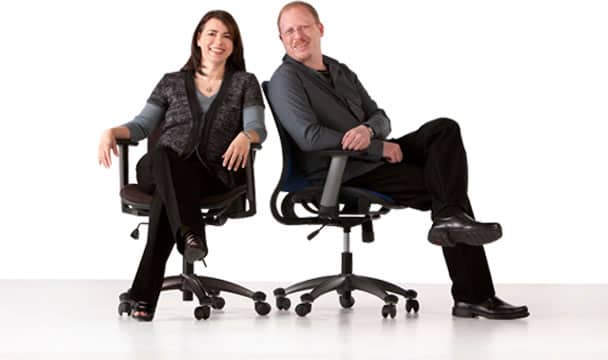Furniture Materials Crash Course From Hazz Design: Part 3 - Wood Materials: Laminate, MDF, Particle Board
Furniture World News Desk on
10/1/2012

Tracey & Tom Hazzard
Imagine a typical furniture shopping experience: a sales person approaches a customer and asks her what she is looking for. The customer gives a specific response, such as “Cherry” or “Leather.” The salesperson immediately takes her to the solid wood or leather shows her the best-selling collections. Soon afterward, she heads straight for the door, wondering in frustration, “Did he even hear me?” The sales person shakes his head, saying, “Typical, she doesn't really know what she wants.”
You have probably spent hours training your sales force on products, techniques and skills to avoid just this situation. So, what does work? In this series, we redefine industry jargon relating to materials, design and construction of furniture. In each part, we will delve into the terms typically used by knowledgeable, expert salespeople, but often end up confusing customers.
Even if you have been selling wood furniture for years, it is time for a refresher course on the layman’s (or woman’s) perception of industry terms. It often helps to delve a little deeper to find out what the customer really wants, even when she thinks she’s being specific.
Is wood really wood? One hundred percent solid wood is typically reserved for custom-made and very high-end pieces. Manufacturers typically mix solid wood and veneers with one of several composite wood core materials. Selection and use of composites are mainly for manufacturing cost requirements, but composites may also be used for structural or durability reasons.
Tip: Consumers perceive most composite core materials as “cardboard” so there is a fine line between disclosure and confusion if this is what you have to sell.
 Laminate
Laminate is not a wood surface; it is a picture of wood. Laminates are made from a paper printed to look like wood grain then glued to plywood, MDF, or particle board. Many are embossed with patterns and textures that look like real wood then coated with Melamine (plastic), or, combined with other plastics under heat and pressure. Laminates are more durable and can take a lot of abuse from scratching, temperature and moisture. Note – calling it wood laminate is misleading; paper laminate is more accurate.
MDF, Medium Density Fiberboard, is a heavy-weight composite material made from finely ground up sawdust particles that are glued and pressed together into a flat board. MDF surfaces are very smooth even after they are cut and shaped. Many furniture manufacturers use MDF painted or with wood veneer and shape the edge of the MDF board with a pleasing shape. The edge of the board gets a more heavy coating of stain, and sometimes a decorative painted treatment to look like wood. MDF is softer, so it shows, especially in the edges, wear and tear faster than other materials.
Particle Board is made from larger, coarser wood particles. The particles are glued and pressed into a board. While the large face is smooth, the edges are very open and must be covered with veneer or some other material. Particle board is the least expensive composite wood material used for making furniture, thus its main advantage.
Wood is the most confusing aspect of modern retail furniture. Worse, it’s full of misconceptions because most consumers believe they understand it. So, pick and choose the industry terms you use with customers carefully. Ultimately, you want to sell furniture today. The fastest way is to build a relationship by understanding and communicating what is relevant and important to a customer’s needs without giving her a lecture or scaring her into doing more research. As always, do twice as much listening as talking. Asking her questions will lead to a better chance of a sale.
About Hazz Design: Graduates of Rhode Island School of Design, product designers Tracy and Tom Hazzard have worked together for most of their two-decade marriage and professional lives. Their shared vision that good design should never cost more, that there is always a solution, and that one-plus-one can have an exponential result has earned them career-expanding projects, multiple design awards, more than a dozen patents, two children and a fine-tuned sense of what consumers want and need in well-designed products. Visit them at www.hazzdesign.com. They can be reached via email at info@hazzdesign.com or call 714-673-6541 for more information.
Hazz Design
Articles in Hazz Design